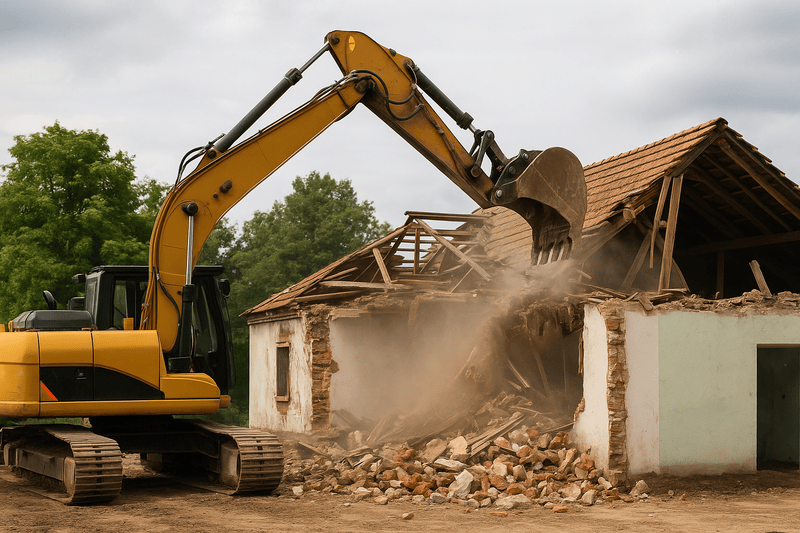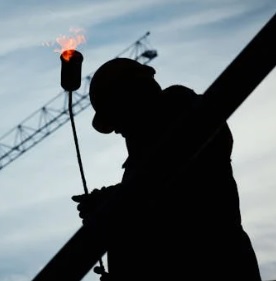
Demolition isn’t just about knocking things down—it’s a process that requires precision, compliance, and strategic planning. In Singleton, a region known for its mix of rural properties, industrial sites, and suburban developments, demolition can take on many forms. Whether you’re clearing an old shed in a paddock, preparing a commercial site for redevelopment, or removing a storm-damaged structure, the path forward isn’t always obvious.
Understanding the finer details of Demolition Singleton services can help you avoid legal issues, environmental complications, and costly delays. From asbestos removal and salvage rights to proper waste disposal and local council approvals, the process can be more complex than many property owners anticipate.
This article unpacks everything you need to know about demolition in Singleton and introduces the role of trusted providers like Demolition Singleton – Hives Demolition in delivering safe, compliant, and efficient results.
Why Singleton’s Location Demands Specialised Demolition Expertise
Singleton isn’t your average suburb. Located in the heart of the Hunter Valley, it’s surrounded by agricultural properties, mining activity, heritage homes, and newer developments. This variety means that no two demolition jobs are alike. The structure you’re removing might contain decades-old materials like asbestos sheeting or timber treated with now-banned chemicals. Or it may border sensitive areas like creeks or industrial zones.
Because Singleton has a unique environmental and regulatory landscape, engaging a demolition provider familiar with the area is vital. Hives Demolition for expert demolition singleton brings local knowledge to every project, tailoring their approach based on site type, condition, and council expectations.
Demolition vs. Deconstruction: What’s the Difference?
Not all demolition is about wrecking balls and dust clouds. In many Singleton projects—especially when timber, bricks, or roofing sheets can be salvaged—deconstruction is a smarter option. This approach involves carefully dismantling structures to preserve reusable materials, which can then be recycled, sold, or repurposed.
Deconstruction reduces waste, lowers landfill contributions, and may even save on tipping fees. It also makes the site safer for future works, since fewer sharp or unpredictable hazards remain.
Professionals experienced in selective demolition or partial teardown work can identify opportunities to recover valuable materials, ensuring you get the most from what’s already on site.
For those looking to understand the broader environmental benefits of deconstruction, this BlogRip article on sustainable construction practices highlights trends that can be applied to regional projects across NSW.
The Importance of Pre-Demolition Planning and Site Surveys
Before any demolition work begins in Singleton, it’s essential to complete a thorough site inspection. This includes checking for asbestos, identifying structural risks, locating underground services, and documenting environmental sensitivities. Rushing this phase could lead to violations, damage to nearby properties, or injury to workers.
In Singleton, some properties also require special clearance from the council—especially if they are near watercourses or part of a broader subdivision plan. Utility disconnection, tree protection zones, and noise management plans may be needed before equipment even enters the site.
Reliable demolition singleton services available now through providers like Hives Demolition include these upfront assessments, ensuring a smooth start that aligns with regional safety and planning codes.
Waste Management and Material Disposal
Once the demolition is complete, you’re left with rubble—and a responsibility. Local councils are increasingly strict about how demolition waste is handled. Inappropriate disposal, especially of hazardous materials like asbestos or treated timber, can lead to heavy fines and even prosecution.
Reputable contractors arrange for correct waste sorting, removal, and tipping at approved facilities. Where possible, non-hazardous waste is separated for recycling or reuse. Singleton’s semi-rural setting also means special attention is paid to surrounding land and ecosystems, making erosion control and runoff prevention a priority during and after demolition.
If you’re unfamiliar with what can and can’t be dumped legally in NSW, BlogRip’s article on construction waste legislation is a good starting point for homeowners and developers alike.
Safety on the Site
Demolition is inherently risky, which is why safety measures are tightly regulated. Singleton properties often present additional hazards like ageing outbuildings, unstable roofs, or hidden septic tanks. A professional team knows how to deal with these challenges, securing permits, using certified gear, and ensuring that every worker on site is fully trained.
Safety also extends to neighbours. Dust suppression, noise mitigation, fencing, and warning signage are essential—especially in residential streets or areas near schools and businesses.
Demolition Singleton – Hives Demolition places strong emphasis on safety management, with job-specific risk assessments and Safe Work Method Statements (SWMS) provided on every project.
When Asbestos Is Involved
Many older homes and sheds in Singleton were built with asbestos-containing materials, especially in roofing, wall linings, and even fencing. If disturbed during demolition, these materials release harmful fibres that can linger in the air and soil.
This isn’t a job for handymen. Only licensed contractors can legally remove and dispose of asbestos in NSW, and the process involves air monitoring, sealed containers, and transport to certified waste facilities.
When you engage a provider for demolition Singleton, confirm they are licensed to handle hazardous materials or that they partner with certified asbestos professionals. Failing to manage this risk could jeopardise your health and future construction plans.
Rebuilding After Demolition
Once your site is clear, what’s next? Many Singleton residents demolish in order to rebuild—a new home, a dual occupancy dwelling, or a commercial facility. Demolition is the first step in that journey, and how it’s done can impact your ability to move forward.
A clean, well-prepared site helps future trades get started faster and keeps project momentum going. If salvageable materials have been set aside, they may even offset part of your rebuilding budget.
Working with experienced crews like those at Hives Demolition for expert demolition singleton means your new project can begin without delays caused by poor site prep or leftover hazards.
Final Thoughts
Demolition is more than just bringing structures down. It’s about protecting the environment, respecting local rules, and setting the stage for what comes next. For Singleton residents, whether you’re clearing land for a new home, preparing for subdivision, or removing unsafe structures, choosing a demolition contractor who understands the local landscape is essential.
Demolition Singleton – Hives Demolition offers a level of care, compliance, and expertise that helps homeowners, developers, and rural property owners manage their projects with confidence.

Leave a Reply